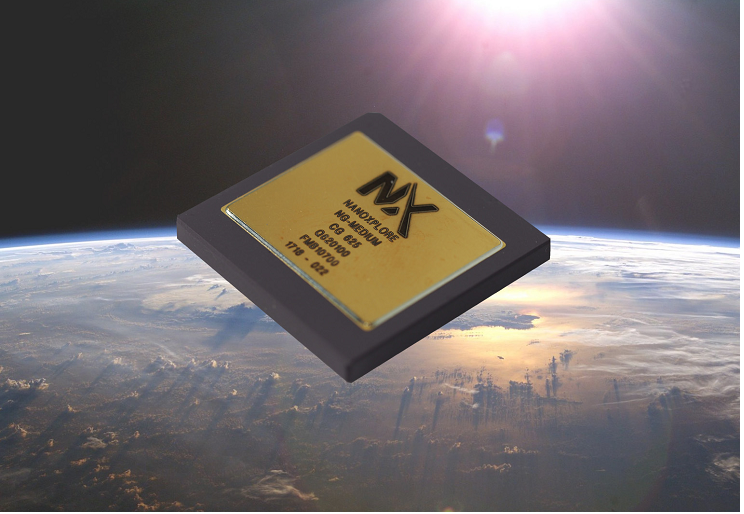Thanks to the VEGAS project, the NG-MEDIUM device has gone from a recently fabricated device to a fully space-qualified solution for space applications. The device also has gone from unknown to popular in both academic and industry circles, being a huge success in the space market.
The VEGAS project has taken the NG-MEDIUM FPGA from a Technology Readiness Level (TRL) of 5 to a Technology Readiness Level of 7, which indicates it is ready to fly in space missions.
There is a massive business opportunity in the space sector, but this industry is traditionally conservative, due to the high risk of the projects involved, which entails a huge entry barrier for any new actors. The NG-MEDIUM FPGA is no longer a newcomer to this sector, having been chosen for a number of space projects, including at least one satellite constellation.
A specific workshop, the BRAVE FPGA days, has been born during the VEGAS project, with great success in terms of attendees, sparking the interest of many actors in the space sector.
FPGA software tools are a critical part of the mix: they both shape the user experience and define whether the true potential of the device can be achieved. The software tools have been greatly improved in all aspects, such as resource usage inside the FPGA and maximum place and route frequency, with the input from the rest of the partners.
At the end of the VEGAS project, Europe has now a fully-european FPGA, available without any import restrictions, that can be used for space missions and other harsh environments.
This device, with the rest of the products of the family, such as the NG-Large and the NG-Ultra FPGAs, will enable the future of european space applications, reducing the dependence on critical technologies and capabilities from outside Europe.

FPGAs (Field Programmable Gate Arrays) are a family of electronic chips that can be configured to behave as the designer wants. Unlike microprocessors, where only the program that is being executed can be changed, but the processing architecture itself cannot be modified, an FPGA offers engineers the possibility of designing and implementing complete digital circuit architectures.
This allows engineers to build custom digital circuits, optimized for specific applications, without having to manufacture them. In the space sector, where volume of applications does not typically scale, usage of FPGAs allows for a specific circuit to be design and tailored for the the specific mission requirements, without requiring silicon manufacturing.
A good explanation of what the VEGAS project provides in this context can be found in the following excerpts from this article from Universidad de Sevilla and NanoXplore:
Not all electronics are created equal. For space applications, electronic components must comply with special requirements so they will not malfunction as a result of the harsh space environment, or even the launch conditions. In the case of Field Programmable Gate Arrays (FPGAs), particularly with SRAM-based FPGAs, Europe has always had a dependence with United States’ technology, since space-grade electronic devices may be subject to arms regulations such as ITAR o EAR.
In order to overcome this dependence of European space technology, 7 European companies and 2 European Universities form the consortium for the VEGAS project, Validation of European high capacity rad-hard FPGA and software tools, a project funded by the European Commision under the H2020 program, specifically under the Leadership in enabling and industrial technologies – Space programme, with a total funding of 3976861,25 EUR.
The VEGAS project is the continuation of a previous project, BRAVE, funded by the European Space Agency’s Technology Research Programme (TRP). The BRAVE project ended with fully functioning prototypes of the medium-capacity, high-performance, radiation-hardened re-programmable European FPGA (NG-MEDIUM), which corresponds to a Technology Readiness Level (TRL) of 5 in the ISO standard 16290 scale.
But components with a TRL of just 5 cannot be used for critical systems in space missions. Before the new devices can be used in space missions, they must be fully tested and qualified for the space environment. This qualification requires many tests on extreme temperature and ionizing radiation conditions, performed according to the European Cooperation for Space Standardization (ESCC) rules. The VEGAS project’s main objective is to validate this first European 65nm rad-hard SRAM FPGA to reach a Technology Readiness Level of 7, which would demonstrate that the device can operate without problem in the space environment.
Project H2020 VEGAS proposes to address a key challenge of European non-dependence and competitiveness regarding rad-hard FPGA for space applications. VEGAS will evaluate (following ESCC rules) and validate the first European rad-hard FPGA in 65nm.
The proposed activity is part of a jointly agreed space FPGA roadmap between EU, the European Space Agency, the CNES and the key European space equipment manufacturers. It is supporting the Strategic Research Agenda of the European Space Technology Platform through various objectives such as:
The proposed activities allow addressing applications beyond the space market such as avionic, energy and transport. These markets are close to the space market in terms of reliability and performance requirements and can be derived from the proposed development in a short time frame.
 VEGAS project has received funding from the European Union's Horizon
2020
research and innovation programme under grant
agreement N° 687220
VEGAS project has received funding from the European Union's Horizon
2020
research and innovation programme under grant
agreement N° 687220